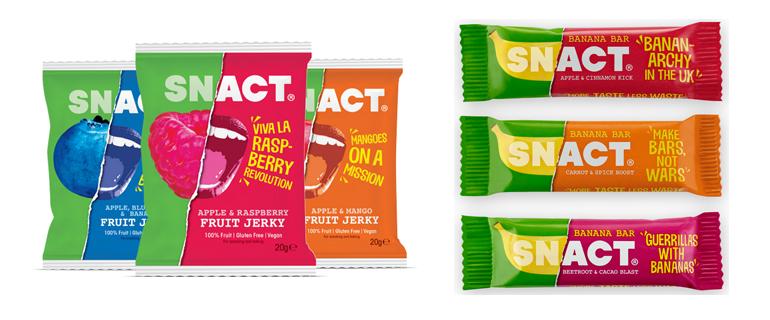Product Packaging Guide For The Food Industry
Food and beverage packaging equipment and processes must meet the demands of regulatory laws, your target consumer segment, and your unique approach as a brand.
Getting all three right can be a challenge, but the end result is a beautifully packaged product that maximizes value at every stage of its lifecycle – from shipping to store shelf presentation to consumption.
To help you approach food packaging from the right mindset so that you can optimize your packaging process and the equipment you use in it, consult the following introductory guide. It will explain how different demands, expectations, and goals will govern the way you configure your packaging line and the equipment you use.
Food Safety and Regulatory Requirements
The 1938 Federal Food, Drug, and Cosmetic Act created the U.S. FDA (Food and Drug Administration) to protect the health and safety of U.S. citizens from deceptive or dangerous practices.
Since then, the regulatory agency has come up with a complex set of laws governing foods and beverages intended for human consumption.
Important laws to consider when weighing your packaging decisions include:
- FDA Food Allergen Guidelines
- The Food Safety Modernization Act
- The Food Allergen Labeling and Consumer Protection Act of 2004
- Antimicrobial Guidelines for Fresh Cut Food and Vegetables
Simply put, the more perishable and less shelf-stable your product is without refrigeration, the stricter the relevant FDA laws may be to your packaging approach.
Always make decisions that promote the chances of your end consumer getting the safest and freshest product possible. This includes the necessary inclusion of food packaging coding equipment and case marking equipment. Coding and marking equipment ensures proper handling, routing, and stocking of food shipments according to the batch number and production date.
Protection and Intended Product Use
With few exceptions, your product will need to look as it did the moment it was packaged as closely as possible. This dedication to preserving freshness and keeping products intact ensures the maximum enjoyment and appearance of value to the end consumer.
Product protection encompasses the packaging design needed to preserve your product through the shipping and stocking process. Your product's susceptibility to shock will demand considerations at the case, carton, and individual item level. This is why you tend to see separate interior packaging in products with cardboard exterior packages. Not only does the interior package seal in freshness, it also uses the remaining space of the box as cushioning from damage.
In addition to protection, food product creators must determine their intended use for the product. Will it be consumed all at once? Will it be in a resealable or easily sealed package? Will it apportion items into single servings? Will the package include non-food items, like disposable utensils?
Design your product packaging with the end consumer experience in mind, including the ability for the package to survive the journey to their pantry, and you will narrow the decision-making process considerably.
Budget
According to some estimates, packaging takes up an average of 10% of the total cost to produce a single product. Add in costs of production, shipping, and distribution, and you often end up with razor-thin margins that force you to consider low-cost packaging options.
But low-cost doesn’t have to mean low-quality. In fact, food packaging automation can enable a lowered cost-per-item even if the materials used are more expensive on a per-item basis. Always consider the total costs of production before making decisions based on packaging costs.
Branding and Trends
The final consideration in making food packaging decisions comes down to branding, appeal, and adherence to current trends.
For instance, healthy or cause-related food brands likely want to ensure they use packaging with minimal waste and a high percentage of post-consumer recycled materials. Higher-end brands may want to showcase the product within the packaging as opposed to hiding it completely inside a cardboard box.
There are also a number of food packaging trends to take advantage of when considering ways to help your product stand out on the shelf. For instance, the UK Snact brand uses extremely bright colors and a fresh, youthful packaging design to show off their brand personality to consumers.
While branding and adherence to trends should fall last on your list of considerations, they are still ultimately important to brand differentiation and, ultimately, sales.
Optimize Your Costs, Protection, Safety, and Brand Appeal With Best-of-Breed Food and Beverage Packaging Equipment
Your food packaging line deserves best-fit solutions for coding, marking, drying, case sealing, and more. You can find the best equipment to suit your company’s unique needs and goals by taking a look at the food and beverage packaging equipment solutions we offer.
Then, reach out to a Raab Sales representative for a consultation that can determine the optimal choices to help you fulfill your goals and grow your brand.


Comments
Add your comments